Jewels closely related to traditional garments, both for men and women; they are used to fix garments, but also have a strong decorative and apotropaic value.
Buttons buttones Widespread throughout the island, they are available in different versions. They are the most popular jewels, used both as collar-links in shirts and in gropus of ten or more, sa buttonera, as sleeve-links in jackets.
Bottoni a piastra: for men, mostly used as sleeve-link in jackets, they are widespread in the area of Sulcis-Iglesiente. They can be round, square, hexagonal and octagonal, or obtained from coins; they are made of silver.
bottoni a pigna: they consist of two caps, one shaped as an hemisphere and a conical top.
Bottoni a bacca: they consisted of two hemispherical caps. The caps were traditionally made from metal discs, mainly of silver, flat and thin, they were shaped as hemispheric or conical caps by means of a punch. The craft was performed on a thick steel plate with a series of cavities of different diameter, la bottoniera, which shaped the metal into the desired forms, either conical or hemispherical. There are specimes characterized by full plates or fretworks, a giorno and a notte filigree — with or without transparency effects, but also often featuring a combination of styles. The front side of the buttons was often enriched with granules, pipirinos, and foil diamonds on the other side, iscattas, or with small circles of twisted metal cord, granutiglios, or engraved V-shaped circular plates, piccadura. The top generally underscored a large grain or a high mounting that contained a red or turquoise stone, very often a piece of coloured glass. Sizes varies, either tiny (for shirts of daily use), or with a diameter of 6 cm and weighing more than 100 grams each, used as part of the Ittiri festive garments. The decorative motifs of the buttons were generally corolla-shaped, sa rosetta, spirals or concentric geometric patterns. They were mostly made of silver but, especially in the Campidano area, gold versions were widespread.
Gancere They are chains of variable length, used in the central and southern areas of the island to close certain pieces of clothing, mainly for women, such as handkerchiefs, aprons and hoods. Made of silver, they feature two ends mostly consisting of hearts, crosses, animal and plant motifs. These parts are sewn to the piece of garment and feature closing hooks of the male and female type. In some versions, they consist of two separate segments, the hooks being mounted in a central position.
Brooches Brooches used to be worn by women only, to fix shirts, headgear or shawls around the shoulders. They were made of silver, gilt silver and especially gold, and had different shapes. The so-called a fiore shape is undoubtedly very popular, consisting of a corolla welded to a stem to which some leaves are attached. In Dorgali the flower-shaped type features a flat extremely stylized shape, almost star-shaped, and made with the a lustrino technique, i.e. with glossy parts made of gold leaf which were highlighted by matte filigree. A similar brooch, but limited to the corolla part, is found in the Nuoro and Baronia areas. In Gallura, a kind of a lustrino, auza a calizi or auza a palma brooch is widespread, usually circular or oval in shape, and made of red gold, often featuring lily, palm and Tree of Life patterns. In the Cagliari, Iglesiente and Sulcis areas, the flower-shaped brooch, also structured with foil and filigree combinations, looks richer and more rounded, and it is beaded and decorated with a large oval stone or a central cameo, that is also the center of a set of engraved and diamond-shaped petals. This brooch is called daisy or sunflowers. As for the Southern Campidano area, a peculiar heart-shaped brooch is worth mentioning, called su piccioni, featuring a complex frame on which tiny figures of birds or fish are carved, and a central insert of crimson foil underscores the twisted wires and beads.

